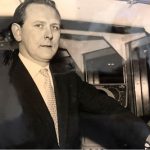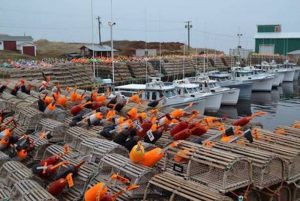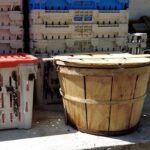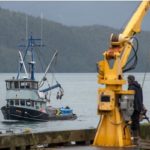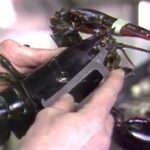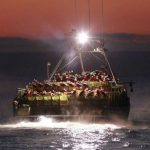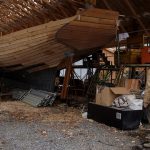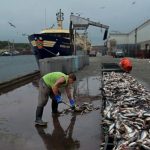Tag Archives: maritime history
Western Flyer Restoration: The John Steinbeck fishing seiner
 Built in Tacoma, Washington, the state-of-the-art seiner was launched from Western Boat Building Company in 1937, destined for the sardine trade of Monterey, California. Builder and shipyard owner, Martin Petrich Sr, specialized in sturdy vessels. For Western Flyer, he used a single, 64ft piece of old-growth fir for the keel; ribs were white oak; fir planks steamed, fitted, and caulked with cotton. The boat’s strength was offset by a graceful sheer and jaunty wheelhouse. In early 1940, scientist Ed Ricketts and author John Steinbeck combed the Monterey waterfront for a vessel that would carry them, along with a small crew and makeshift biology lab, on a scientific research mission to Mexico’s Sea of Cortez. No one was willing until Western Flyer tied to the pier and her captain, Tony Berry, agreed. 12 Photos, more, >>click to read<< 15:37
Built in Tacoma, Washington, the state-of-the-art seiner was launched from Western Boat Building Company in 1937, destined for the sardine trade of Monterey, California. Builder and shipyard owner, Martin Petrich Sr, specialized in sturdy vessels. For Western Flyer, he used a single, 64ft piece of old-growth fir for the keel; ribs were white oak; fir planks steamed, fitted, and caulked with cotton. The boat’s strength was offset by a graceful sheer and jaunty wheelhouse. In early 1940, scientist Ed Ricketts and author John Steinbeck combed the Monterey waterfront for a vessel that would carry them, along with a small crew and makeshift biology lab, on a scientific research mission to Mexico’s Sea of Cortez. No one was willing until Western Flyer tied to the pier and her captain, Tony Berry, agreed. 12 Photos, more, >>click to read<< 15:37
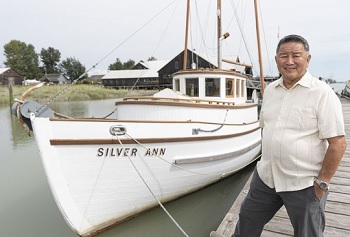
Japanese Canadian fishermen and their families are part of Richmond’s enduring and rich maritime history.
Growing up next to Brittania shipyards in an enclave of cannery homes owned by B.C. Packers was a “Huck Finn-ish existence,” said Higo, 71, who offered Postmedia a little storytelling of his own in support of the event on Sunday. Higo, the son of a fisherman, grew up riding his bike along a boardwalk that ran from No. 2 road all the way to Steveston, and cutting through the shipyards, playing on the wharfs, clambering over seiner nets laid out to dry and watching fish being unloaded. “This was before WorkSafeBC regulations,” said Higo. “The area was one big playground for children.” Higo’s father Frank was a fisherman, who trolled for Coho and spring salmon in Ucluelet and the San Juan Straits.“It was tradition for the sons to fishing with their fathers, but my father wanted a different life for my brother and I,”,, >click to read< 11:05
Charleston’s maritime history – The mosquito fleet
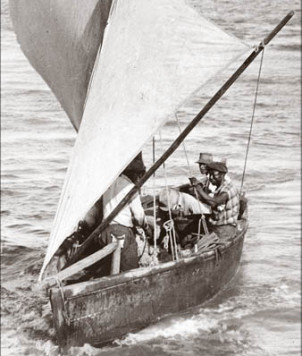 They were among the best watermen in Charleston’s maritime history, their small boats a familiar and beloved sight as they sailed out each morning and returned each afternoon with their catch. From the 1860s until the 1950s, the several hundred African American fishermen who worked the sailing boats of the mosquito fleet formed the core of Charleston’s seafood industry. They fished the creeks, rivers, harbor, and, weather permitting, the offshore banks. They would often go as far out as 30 miles to catch porgy, bass, whiting and, if lucky, a “jack fish.” “One by one they shoved off, and lay in the stream while they adjusted their spritsails and rigged their full jibs abeam, like spinnakers, for the free run to the sea,” wrote Dubose Heyward, describing Charleston’s mosquito fleet in his celebrated novel, Porgy. Read the rest here 13:58
They were among the best watermen in Charleston’s maritime history, their small boats a familiar and beloved sight as they sailed out each morning and returned each afternoon with their catch. From the 1860s until the 1950s, the several hundred African American fishermen who worked the sailing boats of the mosquito fleet formed the core of Charleston’s seafood industry. They fished the creeks, rivers, harbor, and, weather permitting, the offshore banks. They would often go as far out as 30 miles to catch porgy, bass, whiting and, if lucky, a “jack fish.” “One by one they shoved off, and lay in the stream while they adjusted their spritsails and rigged their full jibs abeam, like spinnakers, for the free run to the sea,” wrote Dubose Heyward, describing Charleston’s mosquito fleet in his celebrated novel, Porgy. Read the rest here 13:58
Voices From the West Coast Tuna Fishery – Interview Clips, Transcripts, & Photos
 In the early 1900s, the West Coast tuna industry was born in the small coastal California town of San Pedro, near Los Angeles. An abundant coastal fishery allowed fishing and canning businesses to soon expand to nearby Terminal Island developing into . At the heart of it all was a thriving immigrant community. Read the rest here 22:08
In the early 1900s, the West Coast tuna industry was born in the small coastal California town of San Pedro, near Los Angeles. An abundant coastal fishery allowed fishing and canning businesses to soon expand to nearby Terminal Island developing into . At the heart of it all was a thriving immigrant community. Read the rest here 22:08






 Michael Vlahovich discussed his passion for building and restoring wooden boats as a result of his childhood growing up on the waterfront of Tacoma, Wash. His family came to the Pacific Northwest from Croatia 100 years ago and began the family tradition of commercial fishing and boat building.
Michael Vlahovich discussed his passion for building and restoring wooden boats as a result of his childhood growing up on the waterfront of Tacoma, Wash. His family came to the Pacific Northwest from Croatia 100 years ago and began the family tradition of commercial fishing and boat building. 


























